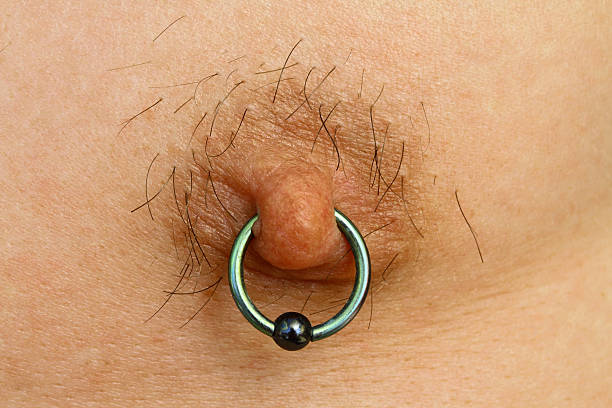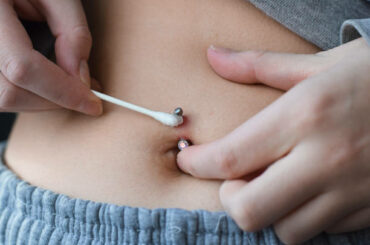Contents
Cleaning Nipple Piercings
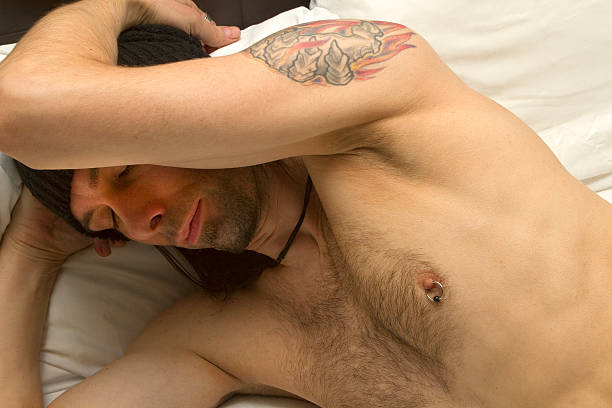
Cleaning nipple piercings is a vital aspect of maintaining their health and ensuring a smooth healing process. As nipple piercings gain popularity as a form of self-expression, it’s crucial to emphasize the significance of proper hygiene and care. This guide provides comprehensive insights into the cleaning nipple piercing process, offering step-by-step instructions and tips to promote optimal healing and reduce the risk of complications.
Nipple piercings have become increasingly popular in recent years, with individuals embracing them as a form of self-expression and body adornment. However, along with the aesthetic appeal, it’s crucial to recognize the importance of maintaining proper hygiene and care, especially through regular cleaning nipple piercings.
The process of cleaning nipple piercings is integral to ensuring their longevity and reducing the risk of infections and complications. Unlike other types of piercings, nipple piercings are situated in an area that is prone to exposure to sweat, bacteria, and friction from clothing. As such, diligent cleaning nipple piercing routines are essential for preventing irritation, inflammation, and potential infections.
Proper cleaning nipple piercings typically involves a gentle yet thorough approach. This often includes using saline solution or a mild, fragrance-free soap to cleanse the area around the piercing site. It’s essential to avoid harsh chemicals, alcohol-based solutions, or excessive manipulation, as these can irritate the delicate skin and disrupt the healing process.
Regular cleaning nipple piercing routines should be incorporated into daily hygiene practices, particularly during the initial healing period, which typically lasts several weeks to a few months. During this time, the piercing is more susceptible to infection and requires extra attention to ensure optimal healing.
In addition to regular cleaning nipple piercings, it’s crucial to adhere to any aftercare instructions provided by a professional piercer. This may include avoiding activities that could irritate or disrupt the piercing, such as swimming in pools or hot tubs, wearing tight or abrasive clothing, or engaging in rough physical activities.
By prioritizing proper cleaning nipple piercing techniques and following recommended aftercare guidelines, individuals can enjoy their nipple piercings safely and maintain their health and appearance for years to come. Remember, the investment in diligent cleaning nipple piercing practices pays off in the form of reduced risks and enhanced comfort throughout the healing process and beyond.
Instructions for cleaning nipple piercing
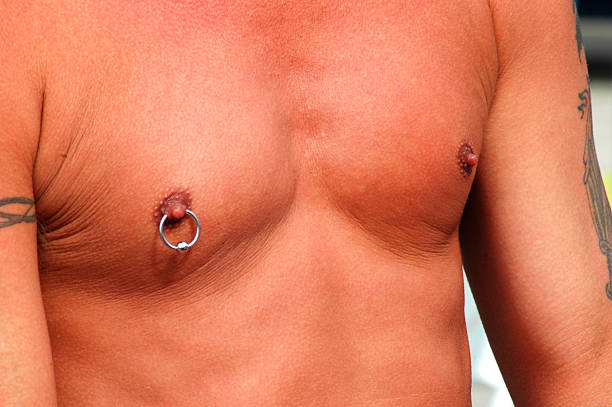
1. Gather Your Supplies: Before cleaning your newly pierced nipple, ensure you have all the necessary supplies on hand. These typically include a sterile saline solution specifically formulated for cleaning nipple piercings, as well as clean cotton balls or swabs.
2. Wash Your Hands: Start by thoroughly washing your hands with a mild, fragrance-free soap and warm water. This step is crucial to prevent introducing any bacteria or contaminants to the piercing site during the cleaning process.
3. Prepare the Cleaning Solution: If you’re using a saline solution recommended for cleaning nipple piercings, ensure it’s at room temperature or slightly warmed. Avoid using homemade saline solutions or harsh chemicals, as these can irritate the delicate skin around the piercing.
4. Soak a Cotton Ball or Swab: Dip a clean cotton ball or swab into the saline solution, saturating it without making it dripping wet. Excess moisture can prolong the healing process and increase the risk of irritation.
5. Gently Clean Around the Piercing: Carefully clean the area around the pierced nipple using gentle, circular motions. Focus on removing any dried blood, lymph fluid, or crusting that may have accumulated around the piercing site. Avoid applying excessive pressure or scrubbing, as this can cause irritation and disrupt the healing process.
6. Pat Dry: After cleaning nipple piercing, gently pat the area dry with a clean, lint-free cloth or allow it to air dry naturally. Avoid using towels or tissues that may leave behind fibers or lint, as these can irritate the piercing.
7. Repeat as Needed: Depending on your piercing professional’s recommendations, you may need to clean your nipple piercing multiple times per day, especially during the initial healing period. Follow their instructions closely to ensure optimal healing and minimize the risk of infection.
8. Avoid Touching: Throughout the healing process, avoid touching your newly pierced nipple with unwashed hands or allowing others to come into contact with it. This helps reduce the risk of introducing bacteria or contaminants that could lead to infection.
By following these cleaning nipples piercing instructions diligently and consistently, you can promote proper healing and reduce the risk of complications. If you have any concerns or experience unusual symptoms such as excessive redness, swelling, or discharge, consult your piercing professional or healthcare provider for guidance.
Daily Cleaning Routine for Nipple Piercings
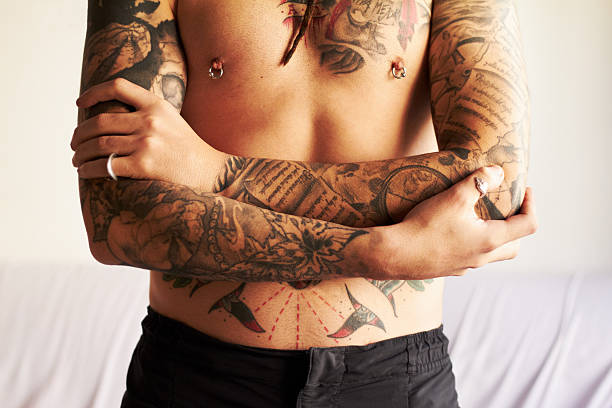
Maintaining a regular cleaning routine for your nipple piercings is essential for preventing infection, reducing the risk of complications, and promoting optimal healing. Daily cleaning nipple piercing helps to remove bacteria, sweat, and debris that can accumulate around the piercing site, minimizing the risk of irritation and infection.
Importance of Regular Cleaning Nipple Piercing
1. Preventing Infection: Nipple piercings are susceptible to bacterial infections, particularly during the initial healing period. Regular cleaning nipple piercing helps to keep the area clean and free from harmful bacteria, reducing the likelihood of infection.
2. Promoting Healing: Proper cleaning nipple piercing techniques support the body’s natural healing process by creating an environment conducive to tissue repair. Removing crusts, dried blood, and other debris allows the skin to breathe and facilitates the formation of new tissue.
3. Reducing Irritation: Accumulated sweat, dirt, and other contaminants can cause irritation and discomfort around the piercing site. Daily cleaning nipple piercing helps to alleviate these issues by maintaining cleanliness and minimizing friction.
Instructions for Daily Cleaning Nipple Piercing
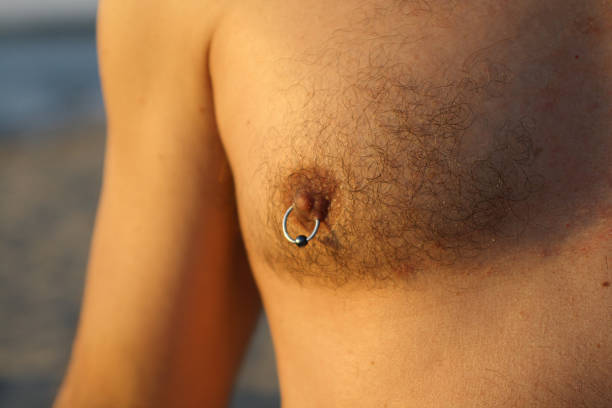
1. Wash Your Hands: Before cleaning your nipple piercings, wash your hands thoroughly with a mild, fragrance-free soap and warm water. This step is crucial to prevent introducing any bacteria or contaminants to the piercing site.
2. Prepare the Cleaning Solution: Use a sterile saline solution specifically formulated for cleaning nipple piercings. Avoid using harsh chemicals or homemade solutions, as these can irritate the skin.
3. Soak a Cotton Ball or Swab: Dip a clean cotton ball or swab into the saline solution, ensuring it is saturated but not dripping wet.
4. Clean Around the Piercing: Gently clean around the pierced nipple using circular motions, focusing on removing any accumulated debris, crusts, or discharge. Take care not to apply excessive pressure or cause undue friction.
5. Pat Dry: After cleaning nipple piercing, gently pat the area dry with a clean, lint-free cloth or allow it to air dry naturally. Avoid using towels or tissues that may leave behind fibers or lint.
6. Frequency: Depending on your piercing professional’s recommendations, you may need to clean your nipple piercings once or twice daily. Follow their instructions closely to ensure optimal healing and minimize the risk of infection.
By incorporating daily cleaning nipple piercing into your hygiene routine and following these instructions diligently, you can help ensure the health and longevity of your nipple piercings. If you experience any signs of infection or have concerns about the healing process, consult your piercing professional or
Selecting the Best for Cleaning Nipple Piercings
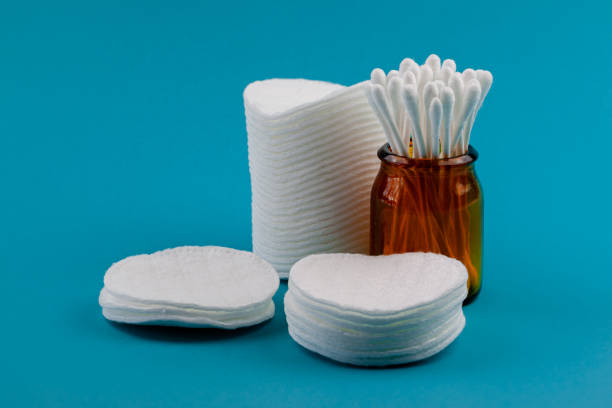
When it comes to cleaning nipple piercings, selecting the right products is crucial for promoting healing and preventing complications. Several options are available, including saline solution, mild soap, and specialized piercing aftercare products. However, it’s essential to prioritize gentle, non-irritating formulations and avoid harsh chemicals or alcohol-based solutions.
Saline Solution
Saline solution is widely regarded as one of the best cleaning nipple piercing options due to its gentle and non-irritating nature. It mimics the body’s natural fluids and helps to keep the piercing site clean without causing excessive dryness or irritation. Saline solution is available in various forms, including pre-packaged sterile wipes, sprays, or solutions that can be used to soak cotton balls or swabs for cleaning nipple piercing.
Mild Soap
Some individuals may opt to use a mild, fragrance-free soap for cleaning nipple piercings, although this should be done sparingly and with caution. While soap can effectively remove dirt and bacteria, it’s essential to choose a gentle formulation specifically designed for sensitive skin. Harsh or scented soaps can strip the skin of its natural oils and cause irritation, so it’s crucial to rinse thoroughly after cleaning nipple piercing to remove any residue.
Specialized Piercing Aftercare Products
There are also specialized piercing aftercare products available specifically formulated for cleaning nipple piercings. These products are designed to provide gentle yet effective cleansing while supporting the healing process. Look for aftercare products that are free from harsh chemicals, fragrances, and alcohol, as these can cause dryness, irritation, and delayed healing.
Avoiding Harsh Chemicals and Alcohol-Based Solutions
It’s important to avoid cleaning nipple piercing with harsh chemicals or alcohol-based solutions, as these can be too abrasive and may irritate the delicate skin around the piercing. Alcohol can dry out the skin and disrupt the natural balance of bacteria, potentially prolonging the healing process and increasing the risk of infection. Similarly, harsh chemicals can cause irritation, inflammation, and other complications, so it’s best to stick to gentle, non-toxic cleaning nipple piercing products.
By choosing suitable cleaning products for nipple piercings and avoiding harsh chemicals or alcohol-based solutions, you can support the healing process and maintain the health and appearance of your piercings. If you have any concerns or experience unusual symptoms, consult your piercing professional or healthcare provider for guidance on the best cleaning nipple piercing practices for your individual needs.
Avoiding Irritants During the Healing Process of Nipple Piercings

During the healing process of nipple piercings, it’s essential to minimize exposure to potential irritants that could impede healing or cause discomfort. Alongside cleaning nipple piercing regularly, here are some tips to avoid common irritants:
1. Choose Loose, Breathable Clothing: choose loose-fitting, breathable clothing made from soft fabrics like cotton. Tight clothing can rub against the piercing, causing friction and irritation. By wearing loose clothing, you can reduce the risk of discomfort and allow airflow to the piercing site, which aids in healing.
2. Avoid Harsh Fabrics: Stay away from fabrics that are rough or abrasive, such as wool or synthetic materials. These fabrics can irritate the delicate skin around the piercing, leading to inflammation and potential complications. Instead, opt for soft, smooth fabrics that won’t cause friction or irritation.
3. Be Mindful of Bras and Undergarments: Pay attention to the type of bras and undergarments you wear, especially during the initial healing period. Choose bras with soft, non-abrasive materials and avoid styles with underwire or rigid structures that may press against the piercing. Seamless bras or bralettes can be more comfortable and reduce the risk of irritation.
4. Minimize Contact with Foreign Substances: irritate or contaminate it, such as lotions, oils, perfumes, or harsh cleaning agents. These products can Avoid exposing the piercing to substances that could disrupt the healing process and increase the risk of infection. When cleaning nipple piercing, stick to gentle, non-irritating solutions like saline solution or mild soap.
5. Protect the Piercing During Physical Activities: Take precautions to protect the piercing during physical activities or sports. Consider wearing a padded sports bra or applying a protective barrier, such as a bandage or silicone pad, to shield the piercing from friction or impact. Be mindful of activities that involve direct contact with the piercing area and take steps to minimize irritation.
6. Avoid Sleeping on Your Stomach: If possible, avoid sleeping on your stomach during the initial healing period of nipple piercings. Pressure from sleeping on the piercing can cause discomfort and prolong the healing process. Try sleeping on your back or side to alleviate pressure on the piercing site.
By being mindful of potential irritants and taking proactive steps to minimize exposure, you can support the healing process of nipple piercings and reduce the risk of complications. In addition to regular cleaning nipple piercing, maintaining good hygiene and avoiding irritants are essential aspects of proper aftercare. If you experience persistent irritation or discomfort, consult your piercing professional or healthcare provider for guidance.
Troubleshooting Common Issues During the Healing Process of Nipple Piercings
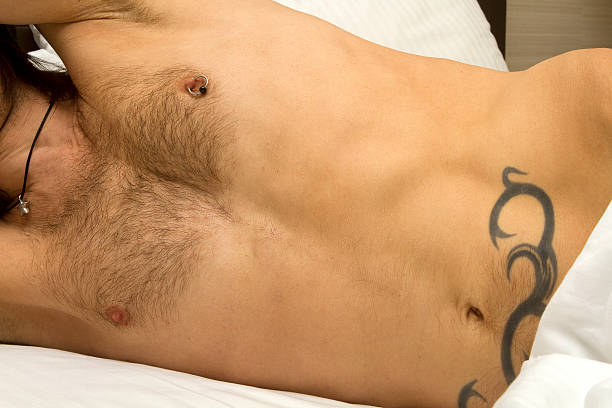
While cleaning nipple piercing diligently and following aftercare instructions can significantly reduce the risk of complications, it’s essential to be aware of common issues that may arise during the healing process. Here are some common problems and advice on how to address them:
1. Infection
- Symptoms: Signs of infection may include redness, swelling, warmth, tenderness, discharge (which may be yellow, green, or bloody), and persistent pain.
- Cleaning nipple piercing: If you suspect an infection, continue cleaning nipple piercing regularly with saline solution or as advised by your piercing professional. Avoid removing the jewelry, as this can trap bacteria and worsen the infection. Consult a healthcare provider promptly for appropriate treatment, which may include antibiotics.
2. Swelling
- Symptoms: Swelling around the piercing site is common, especially during the initial healing period. However, excessive swelling that does not improve or worsens over time may indicate a problem.
- Cleaning nipple piercing: To reduce swelling, continue cleaning nipple piercing as usual and avoid activities that could irritate the piercing. Apply a cold compress or clean, damp cloth to the area for 10-15 minutes several times a day. If swelling persists or is accompanied by other symptoms, consult your piercing professional for guidance.
3. Excessive Pain
- Symptoms: While some discomfort is normal during the healing process, excessive or persistent pain may indicate an issue such as infection or trauma.
- Cleaning nipple piercing: Ensure that you are cleaning nipple piercing gently and avoiding activities that could cause further irritation or injury. Take over-the-counter pain relievers as directed by your healthcare provider, if necessary. If pain persists or worsens, seek advice from your piercing professional or healthcare provider.
4. Keloids or Hypertrophic Scarring
- Symptoms: Keloids are raised, fibrous scars that extend beyond the boundaries of the original wound, while hypertrophic scars are raised but remain within the boundaries of the piercing site.
- Cleaning nipple piercing: Continue cleaning nipple piercing regularly and avoid touching or manipulating the piercing unnecessarily. If keloids or hypertrophic scars develop, consult a healthcare provider for treatment options, which may include topical treatments, injections, or surgical removal.
5. Allergic Reactions
- Symptoms: Allergic reactions to metal jewelry may include redness, itching, rash, or irritation around the piercing site.
- Cleaning nipple piercing: If you suspect an allergic reaction, consider switching to hypoallergenic jewelry made from materials such as titanium, niobium, or surgical-grade stainless steel. Continue cleaning nipple piercing with saline solution and consult your piercing professional for further guidance.
By staying vigilant and addressing any issues promptly, you can help ensure the successful healing of your nipple piercings. If you experience persistent or severe symptoms, seek advice from your piercing professional or healthcare provider for personalized guidance and treatment.
Long-Term Care for Healed Nipple Piercings

After your nipple piercings have fully healed, it’s important to continue caring for them to maintain their health and appearance. Incorporating periodic cleaning nipple piercing and jewelry inspection into your routine can help prevent issues and ensure the longevity of your piercings. Here are some recommendations for long-term care:
1. Regular Cleaning Nipple Piercing
- Even after your nipple piercings have healed, it’s essential to continue cleaning nipple piercing regularly to remove any buildup of dirt, sweat, or bacteria. Use a gentle saline solution or mild soap and warm water to clean the area around the piercing site.
- Aim to clean nipple piercing at least once a day, particularly if you engage in activities that could introduce contaminants to the piercing area, such as exercising or swimming.
- Avoid using harsh chemicals or alcohol-based solutions, as these can dry out the skin and cause irritation.
2. Jewelry Inspection
- Periodically inspect your nipple jewelry to ensure it is in good condition and securely fastened. Look for signs of wear, such as loosening of the balls or clasps, scratches, or tarnishing.
- If you notice any damage or signs of wear, consider replacing the jewelry with a new, high-quality piece. This helps prevent irritation and reduces the risk of jewelry-related complications.
3.Rotate Jewelry Occasionally
- To prevent the jewelry from becoming embedded in the piercing and to promote circulation, you may gently rotate the jewelry occasionally. However, be cautious not to over-manipulate the piercing, as this can cause irritation or disrupt the healing process.
- If the jewelry feels stuck or difficult to move, avoid forcing it and consult your piercing professional for guidance.
4. Maintain Good Hygiene
- Practicing good hygiene habits can help prevent infections and other complications. Keep the area around the piercing clean and dry, especially after bathing or swimming.
- Avoid exposing the piercing to substances that could irritate or contaminate it, such as lotions, oils, or perfumes.
5. Be Mindful of Activities
- Be mindful of activities that could potentially irritate or injure the piercing, such as rough physical contact or wearing tight clothing. Take precautions to protect the piercing during activities that involve direct contact or friction.
6. Seek Professional Advice
- If you experience any unusual symptoms or have concerns about your healed nipple piercings, don’t hesitate to seek advice from your piercing professional or healthcare provider. They can provide personalized guidance and address any issues that may arise.
By incorporating these practices into your long-term care routine, you can help ensure the continued health and well-being of your healed nipple piercings. Remember to stay vigilant and address any concerns promptly to prevent complications and maintain the beauty of your piercings.
Conclusion
In conclusion, prioritizing regular cleaning nipple piercing routines and adhering to proper aftercare practices are essential for the long-term health and well-being of your piercings. By incorporating these habits into your daily routine and remaining vigilant for any signs of irritation or infection, you can enjoy your nipple piercings safely and maintain their beauty for years to come. Remember, the investment in diligent cleaning nipple piercing practices pays off in the form of reduced risks and enhanced comfort throughout the healing process and beyond.

